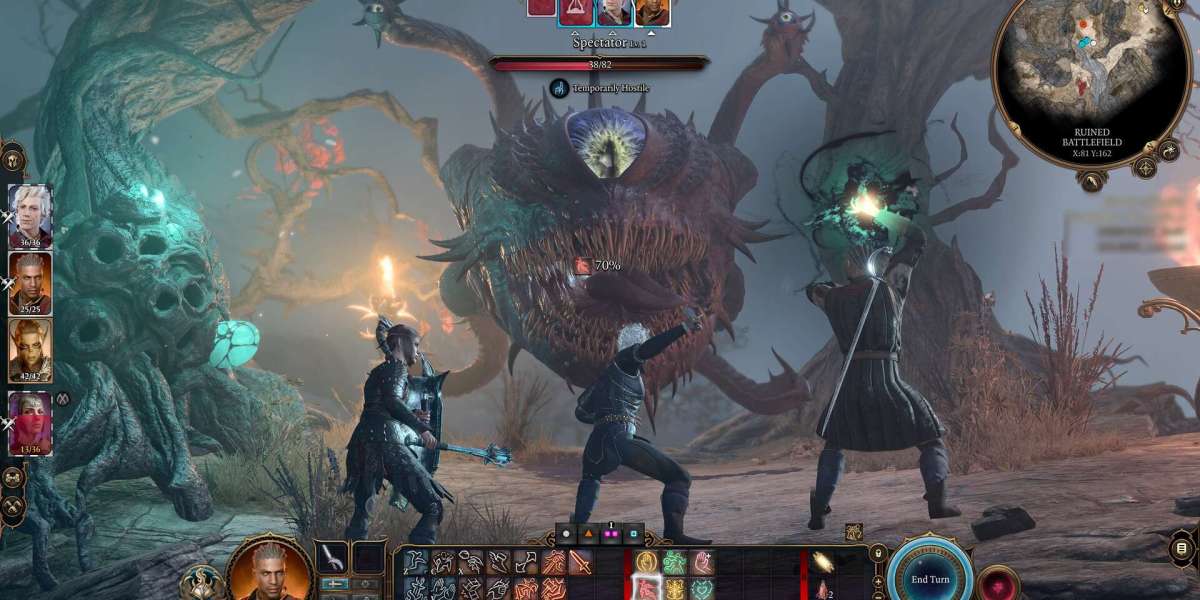Few titles in modern gaming history have ignited the imagination and loyalty of players quite like Baldur’s Gate 3. Developed by Larian Studios, this long-anticipated RPG was launched to critical acclaim, offering not only a love letter to tabletop enthusiasts and Dungeons & Dragons (D&D) purists, but also a deep, sprawling adventure for fans of complex storytelling, strategic combat, and true player agency.
Set in the rich and unpredictable Forgotten Realms of D&D, Baldur’s Gate 3 is the successor to a legendary series that defined the RPG genre in the early 2000s. Yet instead of relying solely on nostalgia, the game reinvents itself with modern mechanics, cinematic dialogue, and open-ended exploration, creating an experience that feels both timeless and boldly innovative.
In this article, we’ll explore what makes Baldur’s Gate 3 such a groundbreaking title, how it stands out in today’s RPG landscape, and why it deserves a spot among the best games of this generation. If you’re passionate about games like this and have your own insights to share, you might want to check out Write for us gaming and become part of the wider discussion.
An Epic Rebirth of a Classic Franchise
When Larian Studios first announced that it would be developing Baldur’s Gate 3, fans were understandably both excited and skeptical. The original Baldur’s Gate games, developed by BioWare and released in 1998 and 2000, are considered cornerstones of computer RPGs. They set high expectations in terms of storytelling, party-based mechanics, and deep role-playing systems.
Larian, best known for its Divinity: Original Sin series, proved to be the perfect custodian of the franchise. Drawing on its expertise in turn-based strategy, narrative complexity, and rich world-building, the studio reimagined Baldur’s Gate 3 with a fresh, modern engine—while staying loyal to the essence of Dungeons & Dragons 5th Edition rules.
The result? A game that balances deep mechanics with accessibility, rich lore with intuitive design, and emotional storytelling with chaotic freedom.
Narrative Depth and Player Choice
At the heart of Baldur’s Gate 3 is a story that evolves with every decision you make. You begin the game infected by a mind flayer tadpole a parasite that threatens to turn you into one of the most terrifying creatures in the D&D universe. However, as you journey through the game’s richly detailed world, you discover that this curse may also grant you mysterious powers and decisions that will shape not only your fate, but the world’s.
Unlike many RPGs that present binary good-versus-evil choices, Baldur’s Gate 3 revels in moral ambiguity. Want to befriend a vampire spawn? Betray your party for power? Side with a mysterious deity or protect the innocent? All are possible, and none are without consequence.
Every choice in dialogue and action is reflected through dynamic cinematic scenes complete with motion capture, facial expressions, and voice acting that bring the world and its characters to life in unprecedented ways.
Turn-Based Tactical Combat
One of the most significant shifts in Baldur’s Gate 3 compared to its predecessors is the turn-based combat system. This change aligns the game with the official Dungeons & Dragons ruleset, offering strategic depth that rewards planning, creativity, and clever use of the environment.
Combat in BG3 isn’t just about numbers it’s about opportunities. You can:
Shove enemies off cliffs
Set fire to barrels and oil slicks
Use spells to manipulate terrain or crowd control
Combine character abilities for devastating combos
The result is a fluid, chess-like battle system where each fight feels like a mini-puzzle. Whether you’re controlling a stealthy rogue or a fire-slinging sorcerer, combat never feels repetitive or uninspired.
Companions That Matter
In any great RPG, your companions are more than just party members they’re co-authors of your journey. Baldur’s Gate 3 delivers on this front with a cast of deeply written characters, each with their own backstories, goals, and moral dilemmas.
Standout companions include:
Astarion, a charismatic vampire rogue struggling with his darker instincts.
Shadowheart, a conflicted cleric of a mysterious god.
Lae’zel, a githyanki warrior whose pride is matched only by her skill.
As your party grows, so do your relationships. You can influence their behavior, romance them, or alienate them based on your decisions. Their personal quests intertwine with the main narrative, making every choice feel meaningful.
A Living, Breathing World
Larian Studios didn’t just create a game they crafted a world that reacts to you. Townsfolk remember your actions. Enemies adapt. Your past decisions ripple across regions, changing questlines, alliances, and even endings.
Whether you're navigating the politics of the Underdark, exploring mysterious ruins, or dealing with devilish contracts, the game constantly rewards exploration and experimentation.
Even seemingly small actions stealing a loaf of bread, picking a certain dialogue option, or saving a random NPC—can lead to major consequences hours later. This design philosophy encourages replayability and makes every campaign feel unique.
A Community-Driven Development Model
One of the reasons Baldur’s Gate 3 turned out so polished was its long stay in Early Access, where Larian Studios actively engaged with the player base. Feedback was taken seriously, bugs were patched quickly, and new content was added gradually, allowing the game to grow organically with community involvement.
Players shaped everything from UI improvements to class balance, making BG3 a great example of how listening to fans can lead to lasting success.
This also built an incredibly dedicated community, filled with theorists, modders, speedrunners, and fan artists. The result is a cultural phenomenon that extends far beyond the game itself.
Critical Acclaim and Awards
Unsurprisingly, Baldur’s Gate 3 has received a slew of awards and accolades, including:
Game of the Year (2023) from multiple publications
Best Role-Playing Game
Best Narrative
Best Performance for voice actors
It’s not just the awards it’s the impact. BG3 has reignited interest in CRPGs, introduced D&D to a new generation of players, and proven that complex, narrative-rich games still have a place in an industry often dominated by live-service titles and fast-action shooters.
Join the Conversation: Write for Us Gaming
Are you a fan of Baldur’s Gate 3 with your own takes on the game’s best classes, hardest moral choices, or favorite character arcs? Or maybe you’re a D&D veteran analyzing how faithfully the game adapts the 5E system?
If so, you should consider contributing to Write for us gaming a platform for passionate gamers, writers, and critics to share their thoughts, guides, reviews, or editorials. Whether you're a lore junkie, a strategy guru, or just want to share your love for the game, your voice is welcome in the community.
Conclusion
Baldur’s Gate 3 isn’t just a great RPG it’s a landmark achievement in interactive storytelling. With its deep mechanics, complex characters, and endlessly branching choices, it offers something truly rare in modern gaming: a world that feels alive, unpredictable, and personal.
For anyone who values meaningful choices, tactical combat, and rich narrative experiences, this game is a must-play. Whether you’re a newcomer to the series or a longtime fan of the genre, BG3 promises an unforgettable journey through darkness, magic, and the unknown.
And if you have insights, opinions, or stories to share from your own adventures don’t keep them to yourself. Join the growing chorus of gamers who are shaping the future of discourse around gaming by contributing to Write for us gaming. The world of Baldur’s Gate is vast, but the community that surrounds it is just as thrilling.


